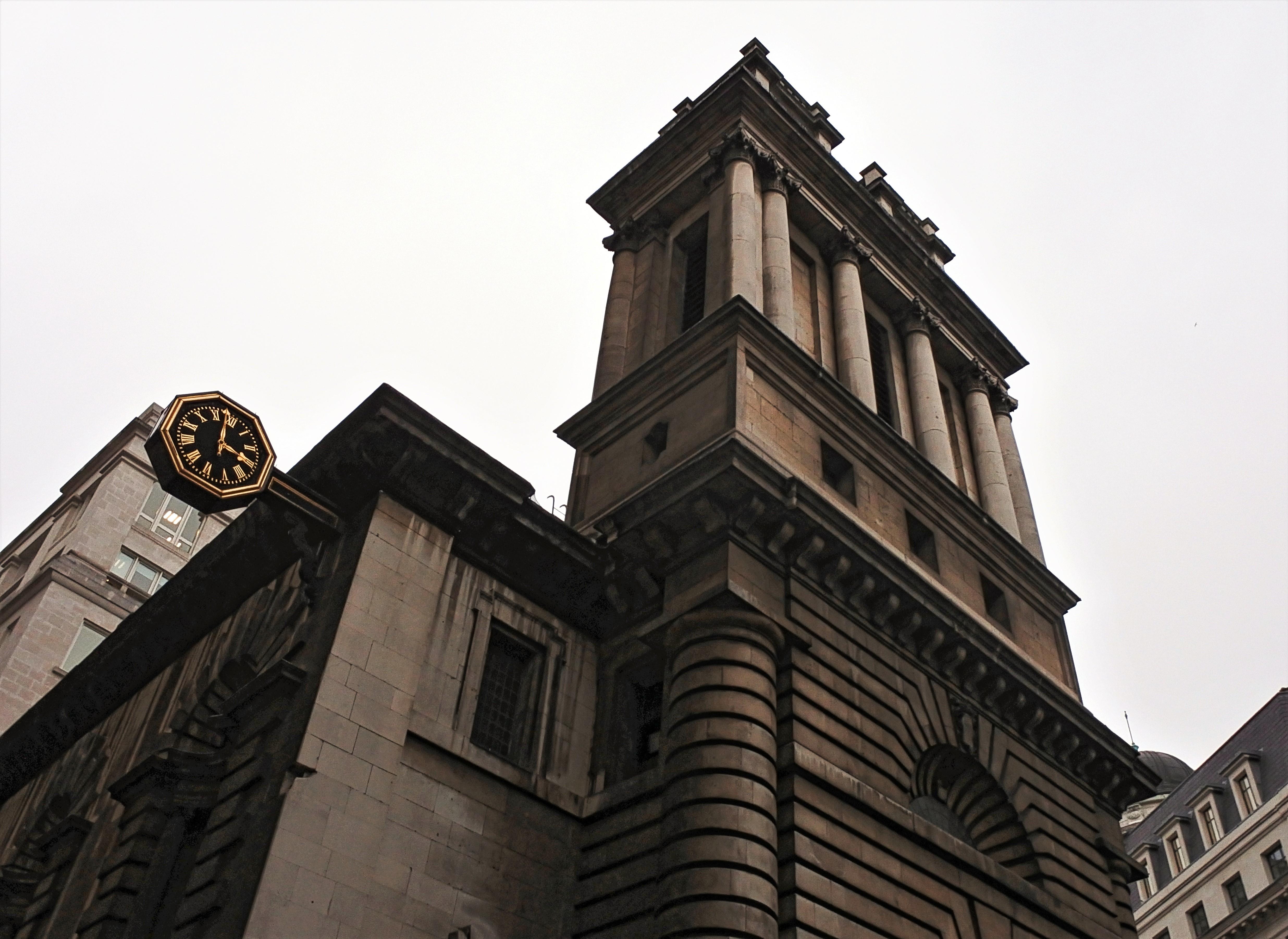St Mary Abchurch
City of London, Greater London
When Wren rebuilt this 12th century church in 1681-86, he employed some of the greatest craftsmen of his age.

On Easter Day 1727 St Mary Woolnoth of the nativity was reopened after it’s rebuilding by Nicholas Hawksmoor, which took 12 years and was paid for from the proceeds of the tax on sea borne coal.
City of London, Greater London
The then Rector was Sam Angier, appointed in 1689 at the early age of 24, who remained in office until he died here in 1752. As he stood on the steps of his brand new church, what would he have seen?
Very little; there was no open space in front of the church as there is today, and apart from Lombard Street the parish, which contained 89 houses, was an intricate maze of small lane and alleys over which stood out the new church tower. The passerby could admire the elaborate north wall on Lombard Street that is regarded by many as Hawsksmoor’s masterpiece.
If Mr Angier walked down Lombard Street he would have come upon the open space still known as the Stocks Market, the site of the old stocks in which offenders were forced to sit, at the mercy of small boys with rotten eggs. The market was famous for flowers, fruit and vegetables; here gillyflowers, new from the Levant, were nicknamed stocks. The square was dominated by curious equestrian statue on plinth, the gift of Sir Robert Vyner, a friend of Charles II. He bought a statue of the King of Poland cutting down a Turk and substituted the heads of Charles II and Oliver Cromwell.
Beyond the Wallbrook, now paved over, was Poultry (the poultry market) and Scalding Alley, where they burnt off the feathers. Most of the streets were open drains, and potholes in the roads were so large that children drowned in them in wet weather. There was little or no street lighting at night; a flaring torch was maintained outside the church, paid for under a will of 1613.
Between Cornhill and Lombard Street was the fascinating area known as Change (only Change Alley remains), where the new coffee houses were doing excellent business. There were plenty of pubs, if you preferred a pub, as many people did: beer and gin drinking was often the only anodyne against the pain and suffering which may otherwise have been intolerable.
City of London, Greater London
When Wren rebuilt this 12th century church in 1681-86, he employed some of the greatest craftsmen of his age.
City of London, Greater London
The church lies over the remains of the Basilica, the northern most part of the great Roman Forum built in the first century AD.
City of London, Greater London
Nothing prepares you, as you climb the 13 steps up to St Stephen for the majestic space within, the dome is Wren's finest and based on his original design for St Paul's.